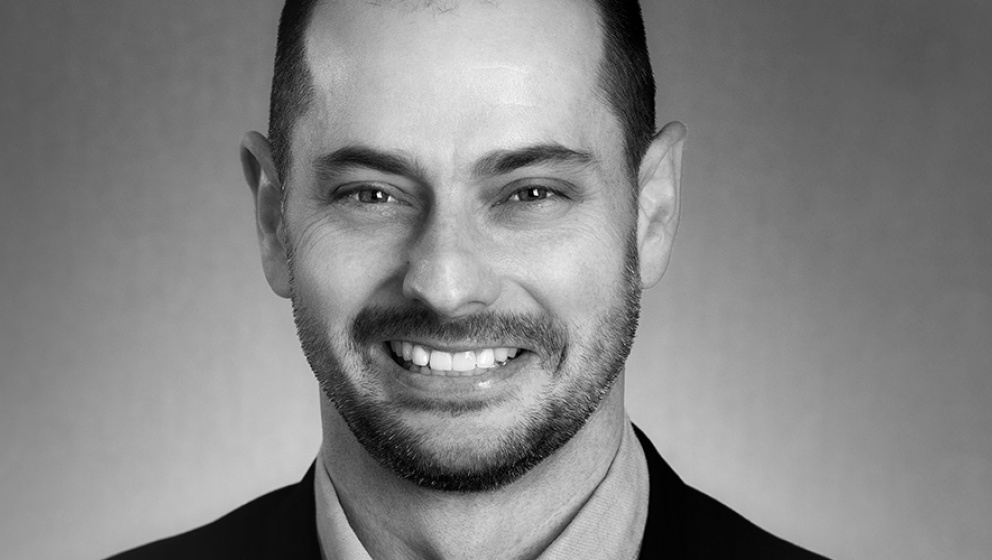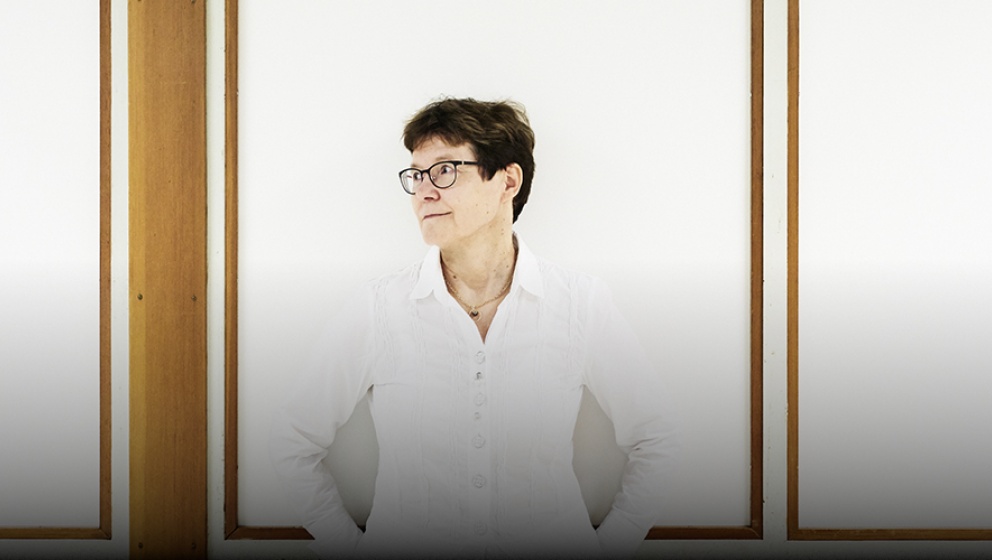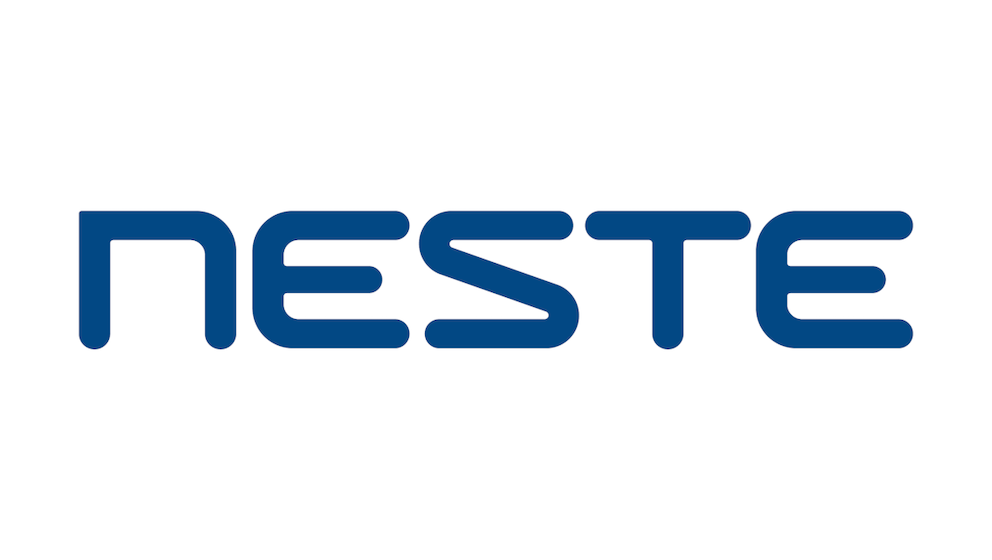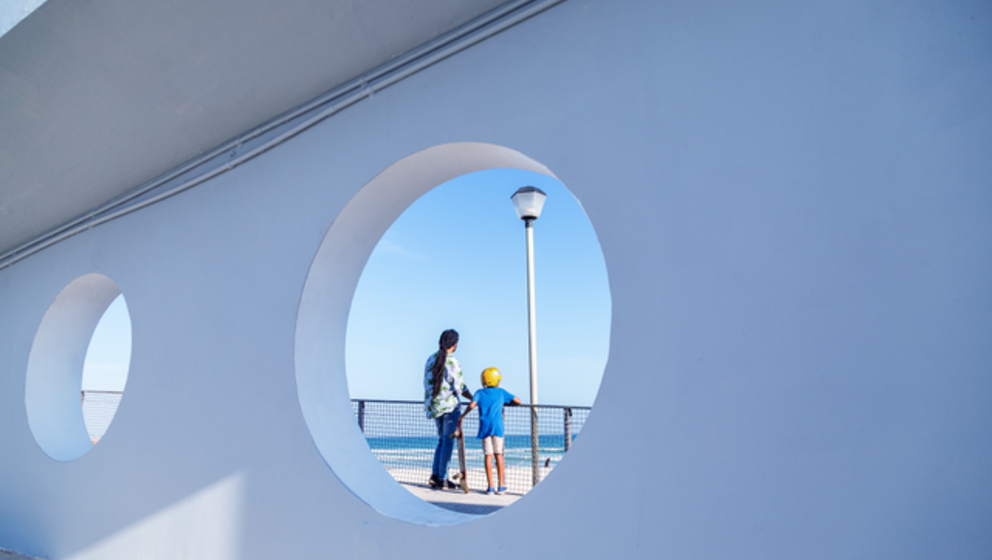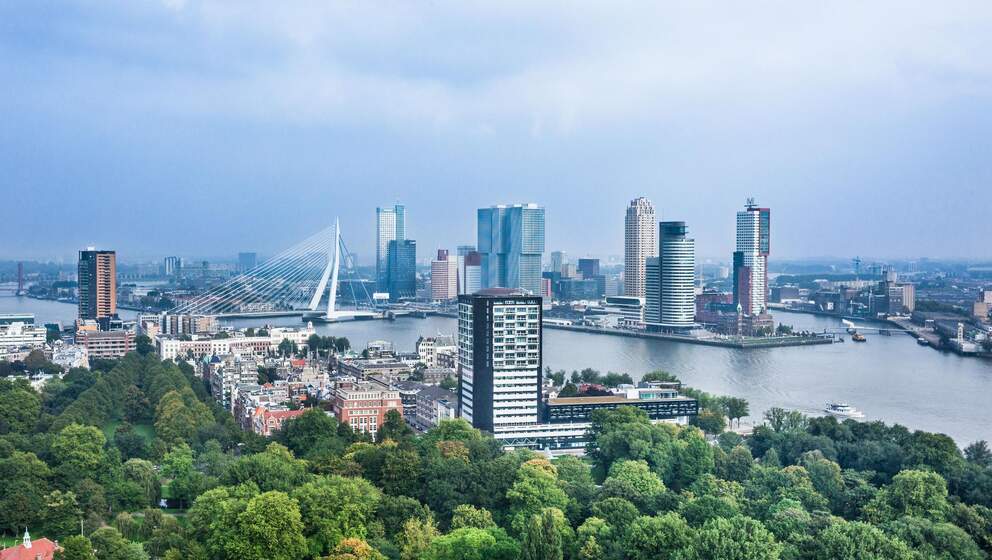The brave and the innovative: Ideas man Kai Larnimaa
Words: Ninni Sandelius. Pictures: Marko Rantanen
Kai Larnimaa is not your typical revolutionary. But this environmental preservation expert’s passion for sustainability has seen him navigate some of the toughest business challenges around – and taught him the value of winning hearts and minds, as well as arguments.
One day in 1997, Kai Larnimaa had an idea.
It came as he heard the announcement that Finland was launching its first Car Free Day. Larnimaa was a specialist working in the environment unit at Neste. The conversation about greenhouse gases’ impact on climate had already begun to gain momentum. And as Neste manufactured fuel for cars, Larnimaa figured it should be part of the solution too.
Larnimaa’s suggestion was simple. Neste, a fuel company, should take part in Car Free Day. They should back up their words about caring for the environment and show their support in a way that would mean something. Perhaps Neste could give away free bus tickets at gas stations?
Excited, the young Finn went to the director who headed the fuel side of the business and pitched his idea over coffee. Larnimaa remembers the director’s reaction clearly. The boss couldn’t believe his ears. At one point, he retorted, “But we’re in the business of hydrocarbons!”
Larnimaa was disappointed. But he also saw something. He noted from the director’s reaction that his proposal was simply ahead of its time. It may have been the right idea. But if the person he needed to buy into it could not see that, then it was not going to get anywhere.
Recalibrating your business model because of climate change is the only way for businesses to survive.
Larnimaa experienced the realization that would shape his career.
Every idea needs not only be the right one – to stack up, to make sense, to bring benefits and so on – but to be accepted too; often by people who are not ready for it. And for that to happen, you have to convert before you can mobilize.
“Maybe taking part in this day wouldn’t have made that much of a difference,” he shrugs today. “But at least it would have signalled that we aren’t against reducing traffic emissions – the opposite in fact; we support reducing them!”
Despite his ideas not going forward twenty years ago, the truth of Larnimaa’s realizations has stayed with him to this day. And his skill – at bringing the future into the present, and in a shape that helps people to recognize, accept and buy into it – continues to play a vital role at Neste.
To be sustainable is to be future-ready
Today, Kai Larnimaa is Neste’s senior expert and head of the department of environment , a unit he’s helped spearhead for more than three decades.
Over that time, he has witnessed the emergence of environmental consciousness, and seen it form the heart and soul of a reborn business, built to be sustainable.
“Yes, in 1997 we hesitated to get involved with Car Free Day,” he says. “But within the next decade Neste had made a huge leap forward. It had developed – and was investing heavily in – its own innovative, renewable diesel. It had even opened a new refinery unit for it in Porvoo as well as refineries in Singapore and Rotterdam to produce renewable diesel. And when you fast-forward another decade to 2017, most of our income was from sustainable fuels.”
He pauses to let the size of this shift sink in. From not getting involved, to inventing a renewable alternative to fossil diesel, to becoming a company whose prime business is sustainability.
It makes me very happy that environmental scientists and experts have had such a global impact on citizens and companies.
Larnimaa says he’s grateful to the people spearheading change in consciousness globally, too. Without their work, change would not be possible.
It makes me very happy that the work environmental scientists and experts have done has had such a global impact on citizens and companies,” he says. “It is vital that governments understand the magnitude of the challenge that climate change brings."
Even though some companies find the idea of recalibrating their business models because of climate change daunting, Larnimaa believes it is the only way for businesses to survive.
The businesses that are able to rise to the challenge of climate change will succeed in the long run.
He believes sustainability is an indicator of future-readiness, and that this is why sustainable businesses have become more attractive to investors. “The businesses that are able to rise to the challenge of climate change will succeed in the long run,” he says.
But he knows the scale of the challenge. After all, Larnimaa’s own moment of truth showed him that preparing people’s mindsets to accept the future is every bit as important as seeing what’s in it.
And his own past holds some of the keys as to how his approach to this challenge would define his life – and to an extent, all of ours.
The dawn of environmental awareness
There are clues to Kai Larnimaa’s future direction scattered throughout his early life.
He was born in the small city of Kouvola in southeast Finland. A fan of chemistry, physics and biology from an early age, he took environmental studies at Kuopio University – now part of the University of Eastern Finland – on leaving school in 1980.
He found this brand-new discipline exciting, and it seemed to combine all his interests. But his enthusiasm wasn’t always echoed in those around him. Larnimaa was raised in a working-class home and he was the first in his family to either graduate high school, or pursue academic studies. But while his family was delighted about him attending university, his choice of subject left them baffled.
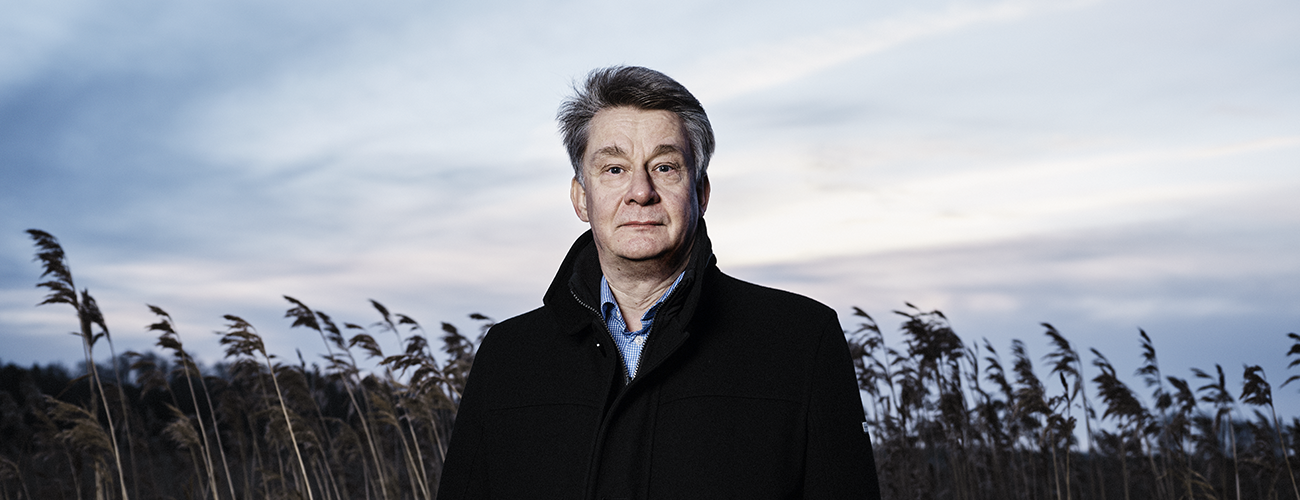
My family politely assured me that perhaps environmental studies would become a field of the future.
“They thought I was going to become a doctor or a judge!” he laughs.
“Still, in the end, they politely assured me that perhaps environmental studies would become a field of the future. And it sure did.”
They were not alone in finding the subject strange. A concept imported from the United States at the end of the 1970s, ‘environmental studies’ as a discipline was something completely new and different – odd, even – in Finnish academia. As Larnimaa started his studies, even he was uncertain of the direction his career would take.
But even then, there were important signs, for those watching, that environmental concerns were about to go mainstream.
At the time, environmental policy was being shaped in Finland. The Finnish Ministry of the Environment was established in 1983, following the rise in environmental consciousness in the 1970s, and legislation regarding air protection was imposed. As concerns about the state of environment spread across the world, so did environmental activism.
Larnimaa witnessed how some of his fellow students became interested in environmental activism in the wake of the new movement; nuclear energy being one of the issues that divided the students’ opinions.
Larnimaa’s awakening to environmental issues also occurred during his studies.
“I didn’t have a certain cause that I lobbied for. I wanted to champion better practices for industries, gain expertise, reading and learn as much as I could.”
In the course of his studies and researching his master’s dissertation on flue gas emission in brickworks, he became especially interested in air protection.
But it went further than the dissertation. He realized that with the help of research, and with scientific facts to back him up, he could argue for change, and develop solutions to reduce emissions and preserve the environment.
I realized I’d rather work inside the factory than be shouting at the gates.
With this firm agenda, Larnimaa became editor of the student magazine Emissio. He became a campaigning figure, wanting everyone to see that he and his student colleagues could provide companies and government alike with expertise, and help them to take environmental issues seriously.
The expertise gained in air protection provided Larnimaa his first full time job before final graduation and he joined an engineering company providing stack testing services for industries. By April 1987, this line of thinking led him to Neste’s door, as a keen postgraduate applicant entering the workplace.
At his job interview, the senior vice president and head of the Neste environmental and safety department and his future boss asked why he wanted to work there. He gave a response that was to plant the seed of his life’s work. “I told them my education had made me realize that I’d rather work inside the factory – to see, experience and understand what could be done about reducing industrial emissions – than be shouting at the factory gates.”
Larnimaa considers the woman who posed the question, Airi Laiho, one of his heros.
”She taught me how our industry benefits from taking environmental issues seriously.”
Sustainability as a profit driver
The attitude of relying on science and research has guided Larnimaa throughout his 30-year career at Neste as an expert in environmental matters.
It’s easy to see why the company was interested in him, too. Neste had founded one of the world’s first environmental departments as early as 1969. The unit was created to monitor how Neste refineries affected their surrounding areas, and to cut down emissions.
Neste was a pioneer in environmental thinking, founding one of the world’s first environmental departments in 1969.
When Larnimaa began his career at Neste, however, his first role was a surprise – perhaps even a slight disappointment. He was assigned as a security advisor for chemical products; a role that had little to do with his expertise in air protection.
”Even though I was somewhat out of my element, I focused on the new job,” he recalls. “Neste manufactured chemicals and plastics and we developed a type of polyester resin that increased the quality of air in the workplace considerably, and reduced health risks to the factory’s workers and clients. The reception of this product was very positive. So in addition to being a safer product, it ended up increasing our market share.”
This was the first time he learned an important lesson, he says, a lesson he would learn many times during his career. “By making processes and products more environmentally friendly and safe, you usually increase sales and profit, as well.”
Larnimaa vividly remembers how in the 1980s, Jaakko Ihamuotila, Neste’s CEO at the time, addressed all employees. He emphasized that environmental issues should not be considered a burden only, but an opportunity for business.
By making processes and products more environmentally friendly and safe, you usually increase sales and profit, as well.
Ihamuotila’s vision was proof for Larnimaa that he had chosen the right place to work. But despite the CEO’s support, the attitude towards environmental issues and the experts of the field varied widely within the company back in the 1980s and 1990s.
“Some were tentatively positive,” says Larnimaa. “Some were perplexed. And many were sceptical.”
But Larnimaa and his colleagues were confident that Neste needed to consider environmental safety factors in order to succeed. “We knew that if we slipped, we would soon get ourselves into trouble.”
Against resistance
By that time, his work within Neste had taught Larnimaa to navigate every given situation for the best possible solution – both for the company and for the environment.
In 1990 he began developing a waste management plan for Neste’s Porvoo refinery in Finland. The refinery’s landfill was becoming full, and the planned expansion was starting to look very expensive. Still, when Larnimaa suggested that the landfill should be closed and the waste taken to the new public landfill nearby instead, his director pushed back against the recommendation.
But Larnimaa was polite and determined. By 1992, his plan had been implemented, and proved a success. Neste’s own landfill was closed, and waste delivered to the new, properly engineered public landfill. The result was a success that owed much to Larnimaa’s feeling for human psychology: at the public landfill, incoming trucks were weighed and billed accordingly, so more attention was now paid to the amount of waste in general.
”They say, ‘pollution prevention pays’,” smiles Larnimaa. “And this is exactly what happened here. Everyone was pleased with how it turned out. We didn’t have to worry about the maintenance and costs of a landfill anymore, we reduced the overall amount of waste, and saved some money, as well.”
When new ideas are suggested, there is a pattern that occurs, Larnimaa explains. Resistance, suspicion, and hesitancy are common reactions to solutions that challenge the status quo.
There is a strong opposition against preventing and resolving climate change. Even though the facts are straightforward and call for urgent action, some people and governments still won’t get behind it.
”At first the resistance can feel really frustrating. But I have learned that people need time to adjust, to re-evaluate their views and get on board. Eventually the resistance subsides, and changes can be made. It just takes some time and patience.”
Larnimaa thinks the same is true on a larger, global scale, too.
“There is a strong opposition against preventing and resolving climate change. Even though the facts are straightforward and call for urgent action, some people and governments still won’t get behind it. It takes time,” Larnimaa says.
A hard lesson in the importance of transparency
Larnimaa has witnessed his fair share of setbacks, too. In the beginning of the 1990s, the emissions of Neste’s refinery in Porvoo became a concern for the local community, who started a grass-roots campaign against Neste. Finland’s most prominent newspaper, Helsingin Sanomat, weighed in, with a fiercely critical broadside against Neste and its emissions.
“We weren’t prepared for criticism of that scale,” he admits.
The irony, says Larnimaa, is that Neste had already started building a new sulphur dioxide recovery facility to dramatically reduce sulphur emissions. Yet it had, up to that point, failed to communicate its plans to the public and the media.
We needed to do even more for reducing our emissions, we needed to do better and be transparent.
Larnimaa concedes the critique felt “harsh”, as Neste was complying with all regulations. But he says the negative attention helped shift attitudes and spur a new way of thinking at Neste and foster an attitude of transparency and working with communities – today, these are hallmarks of the company.
“It was a time of reckoning for us. We learned a lot. We realized we needed to do even more for reducing our emissions, we needed to do better. We had also failed at being transparent about our operations.”
For Larnimaa, transparency is an important key to success. Neste now readily discloses that in the past, it has been on top of the list of Finnish companies with the most emissions.
“At the same time, we are able to show that we have worked hard to reduce those emissions,” he says. For example, Neste has been able to dramatically reduce its refineries’ sulphur dioxide and nitrogen oxide emissions when compared with statistics from the late 1980s.
How to stay ahead of the game
One of Larnimaa’s most important achievements was to build a groundwater monitoring system at Neste refineries in Porvoo and Naantali.
In the late 1980s, it was acknowledged that soil contamination was a serious environmental and health problem. For his part, Larnimaa was certain it was an issue Neste should investigate. He travelled to the United States in 1990 to learn more about monitoring and preserving groundwater in order to detect changes in the soil.
”I then set up the system of groundwater monitoring for Neste. It is in operation to this day.”
Larnimaa smiles as he recalls the reaction he got when he introduced the system to the refinery director.
“I recommended 10 monitoring stations; the director decided there should be five. I was pleased with that because it is important to get started. After a year we had the 10 stations I initially proposed.”
Neste started the soil contamination monitoring in 1992, years before it became mandatory for companies.
“It is very important to stay ahead of the game and show initiative when tackling environmental concerns – before they become problems,” Larnimaa says. “To care about the environment is in the DNA of modern Neste. We don’t try to ignore challenges; we face them and cope with them.”
The EU commission is proposing a strategy that aims for zero emissions by 2050. It is my job to figure out what that means for Neste.
”I’m constantly looking into how things can be approved and developed. This has been my passion ever since university. For example, the new EU commission is proposing a new Green Deal strategy that aims for zero emissions by 2050. It is my job to figure out what that means for Neste.”
Asked for his greatest accolade, Larnimaa remembers a compliment a colleague at Neste once gave him.
“I’m so focused on backing my arguments with facts and figures,” he laughs. “One colleague called me ‘the most logical non-engineer of the company!”
